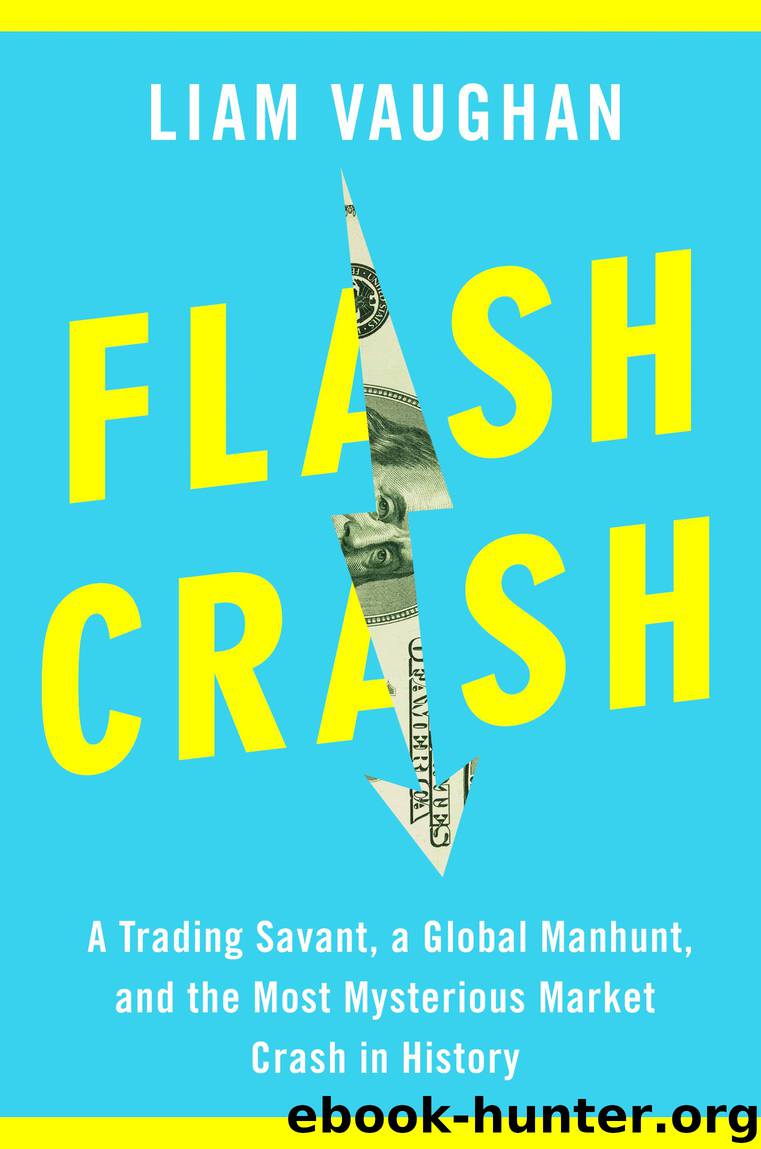Flash Crash by Liam Vaughan

Author:Liam Vaughan
Language: eng
Format: epub
Publisher: Knopf Doubleday Publishing Group
Published: 2020-05-11T16:00:00+00:00
* IXE and Alejandro Garcia declined to answer questions or be interviewed for this book. The company said in a statement it considered the information presented in this account “tendentious” and it “did not agree with the publishing context.”
CHAPTER 17
◼
MR. X
Navinder Sarao’s arrest would ultimately involve an army of people from agencies including the CFTC, the FBI, the Metropolitan Police, and the Department of Justice, but the investigation started with a lone individual with no affiliation to the government. He was a day trader, like Sarao, grinding out a living in a small prop firm in Chicago who, in 2012, happened to be back-testing his system using data from the day of the Flash Crash when he spotted something the whole world had missed. His identity has never been made public. We’ll call him Mr. X.
Mr. X is a few years older than Sarao and started his career as part of a pit trading firm’s first forays into electronic trading. For a long time he was at the bottom rung; he struggled to cover the rent. He contemplated whether to pursue a career in his primary love, design. Money was never his major priority, but he was good with computers and over time he got sucked into trading. “I liked the problem-solving aspect, looking at markets like a puzzle,” he says. Eventually, he struck out on his own, renting a desk at various firms before teaming up with a handful of traders and programmers he’d met along the way to start their own outfit. In the beginning, Mr. X was a “point-and-click” trader like Sarao, placing every order with his mouse and keyboard. But as algorithms proliferated, he realized he would need to adapt. Working with a programmer from Europe he’d been recommended, he started to develop his own algos—basic ones at first, intended to cut down on keystrokes; then more complex iterations that capitalized on the patterns and relationships he’d observed. “I’d describe it as gray box now,” he says. “There’s a lot of automation, but it still takes manual inputs and interaction.”
Mr. X, who speaks quickly and continuously, as though he’s worried if he stops he might not get another chance, describes himself as a market maker, a timeworn strategy that involves constantly posting orders on both sides of the market and making money on the bid-ask spread. By providing liquidity, he believes he is offering a service to the wider financial ecosystem as well as earning a decent living. At its core, market making is straightforward—you post a bid to buy an e-mini for, say, $1 and an offer to sell one for $1.02 and, when both orders have been lifted, you pocket two cents. Do that hundreds of thousands of times a day and you have a business. But markets move around quickly, and providing two-way prices can be risky. Making consistent profits irrespective of market conditions is a specialized and complex undertaking. To maximize his returns, Mr. X asked his programmer to develop
Download
This site does not store any files on its server. We only index and link to content provided by other sites. Please contact the content providers to delete copyright contents if any and email us, we'll remove relevant links or contents immediately.
Hit Refresh by Satya Nadella(9036)
When Breath Becomes Air by Paul Kalanithi(8326)
The Girl Without a Voice by Casey Watson(7821)
A Court of Wings and Ruin by Sarah J. Maas(7648)
Do No Harm Stories of Life, Death and Brain Surgery by Henry Marsh(6887)
Shoe Dog by Phil Knight(5138)
Hunger by Roxane Gay(4869)
The Rules Do Not Apply by Ariel Levy(4842)
A Higher Loyalty: Truth, Lies, and Leadership by James Comey(4840)
Tuesdays with Morrie by Mitch Albom(4683)
Everything Happens for a Reason by Kate Bowler(4677)
The Immortal Life of Henrietta Lacks by Rebecca Skloot(4523)
Millionaire: The Philanderer, Gambler, and Duelist Who Invented Modern Finance by Janet Gleeson(4373)
How to Change Your Mind by Michael Pollan(4288)
All Creatures Great and Small by James Herriot(4228)
The Money Culture by Michael Lewis(4073)
Man and His Symbols by Carl Gustav Jung(4066)
Elon Musk by Ashlee Vance(4023)
Tokyo Vice: An American Reporter on the Police Beat in Japan by Jake Adelstein(3935)
